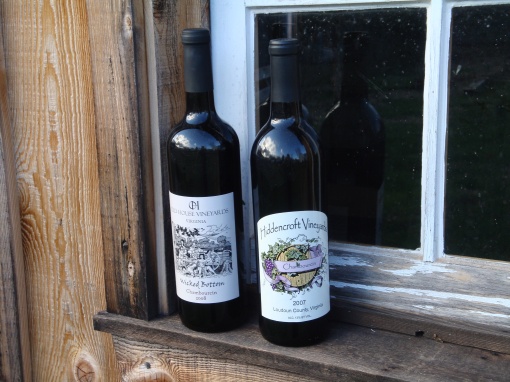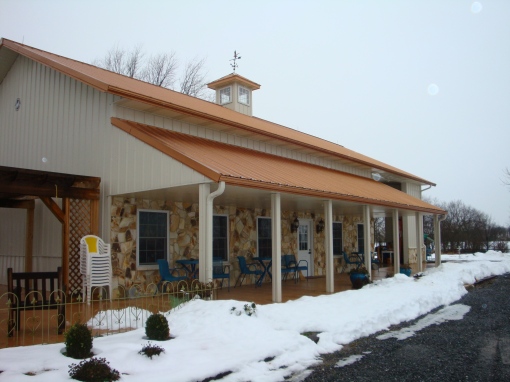When Joe Roberts, aka 1 Wine Dude, floated the idea of single vineyard wines for the topic when he hosted Wine Blogging Wednesday #75, we immediately let him know that we were in. When I first started drinking wine, terrior was something I knew noting about. It’s still something I’d have a hard time explaining to anyone, but through a lot of tasting throughout Virginia, I’ve come to understand the idea of a sense of place in a bottle that can happen with single vineyard wines. There are characteristics that can transcend vintage and winemaker variation, and I’m always excited to try one of these wines that is so closely tied to a given place.
One of our biggest problems was selecting a particular wine to open and highlight in this post. When we started brainstorming about this, Linden, Delaplane, Tarara, Prince Michel, Chester Gap, and Glen Manor immediately came to mind. There’s also Breaux who, especially for their club releases, does not just vineyard designate wines but parcels within the vineyard. We were also reminded that Pearmund, Winery at La Grange, and Corcoran have/have made vineyard designate wines. Others throughout the state would likely qualify if you talk to the wineries/winemakers.
In the end, however, we opted to open a bottle of the Three2One Cellars Tranquility red blend ($45*). This wine was the result of a collaborative winemaking project undertaken by Jordan Harris (Tarara Winery), Ben Renshaw (8 Chains North), and Clyde Housel (Hiddencroft Vineyards). Each winemaker buys fruit from the Tranquility vineyard in Purcellville (Loudoun County), VA. They all have different styles to their wines, but they decided to work together on this by each contributing 2 barrels of wine. The final blend they arrived at was 77% cab sauv and 23% tannat. Since this was the blend that these winemakers collectively felt best expressed what this vineyard had to offer, I thought it would be a perfect wine to use for this Wine Blogging Wednesday theme.
We were able to try this wine last year when we did a tasting with Jordan at Tarara. At the, even with decanting, this was a really big wine that seemed like it needed a bit more time. I figured that, even with the additional time in the bottle, the wine would benefit from decanting. This was a late night at work for both of us, so we’d planned ahead and had a shredded flank steak and black beans in the slow cooker waiting for us when we got home. It probably wasn’t an ideal pairing (check out my partner’s comment blow for more information), but you can do worse than a beef dish with a big red wine…
Anyway, to return to the wine, when I first opened it, I noted dark, dried fruit (mostly berries and fig) on the nose, but the wine was quite tight. The wine definitely opened up with time in the decanter and swirling in the glass, and the fruit elements brightened up and became more prominent. As the wine continued to open, I also started to attend more to earthy, spicy, and graphite notes.
There was a lot going on with this wine, and I really look forward to revisiting it at some point in the future when we open our other bottle. If you, like us, managed to hold on to a bottle or two of this wine, know that it is definitely drinkable now. At the same time, I think that this wine will still benefit from some more growing up time in the bottle.
Also, while there’s definitely an oak backbone to this wine, it wasn’t overwhelming, and there was still plenty of great acid to help provide balance and allow this wine to play well with food. I’m relatively new to wines from this vineyard, so I don’t yet feel that I’m in a position to talk specifically about the “somewhereness” of this wine, but I’ll definitely be looking for that in the future (the way we recently did with two white wines from Honah Lee Vineyard). For those of you with more experience drinking Tranquility wines, what do you think speaks to the terrior?
(* We were given this bottle as a sample as part of the launch event for this wine in 2011)












